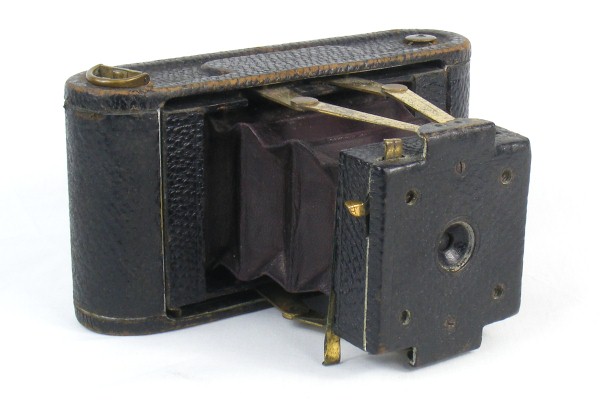Folding Pocket Kodak
Eastman Kodak Company
| Name: | Folding Pocket Kodak |
| Manufacturer: | Eastman Kodak Co. |
| Country of Origin: | USA |
| Construction: | Horizontal format folding rollfilm camera, where the
lens standard panel pulls out on sprung struts with collapsible
bellows. The body was made from a combination of aluminium and
wooden components, making it very light as well as compact. The camera underwent a number of design changes. |
| Plate / Film Size: | 105 rollfilm (12 pictures 2¼" x 3¼") |
| Lens: | Achromatic f11 |
| Shutter: | Eastman Automatic (built-in to front panel) |
| Movements: | None |
| Dimensions (w x h x l): | |
| Production Period: | 1897 - 1899 |
This camera is a significant milestone in camera development as it was to establish the principals of the folding rollfilm format. It initiated the very popular Folding Pocket line of cameras and also introduced the 2¼" x 3¼" picture size that was to prove very popular.
This camera, along with the Pocket Kodak that was introduced two year earlier, was set to push photography into the hands of the everyday amateur. Like the Pocket Kodak, it was designed and manufactured by Frank Brownell for Eastman Kodak Co in Rochester.
The camera was initially introduced as the Folding Pocket Kodak, but was subsequently designated the No 1 Folding Pocket Kodak upon the introduction of other sizes.
The camera underwent a series of minor design changes during its early production. The distinctive feature of the very first model is the recessed dome shaped surround to the lens opening, with four circular openings on the panel, two of which are used for reflecting viewfinders. Later models had a plain flat front and only two openings. This first version also had brass fittings, which were subsequently replaced by nickel plated fittings. Early in the production, a locking catch was fitted (but see noted below relating to this aspect). Versions that show some of these changes are referred to in McKeown as 'Transitional' models.
| Model / Variant: | Original Model |
| Date of this Example: | 1897 |
| Serial Number: | Serial #5986 stamped into aluminium base (inside). |
| Availability: |
|
| Inventory Number: | 261 |
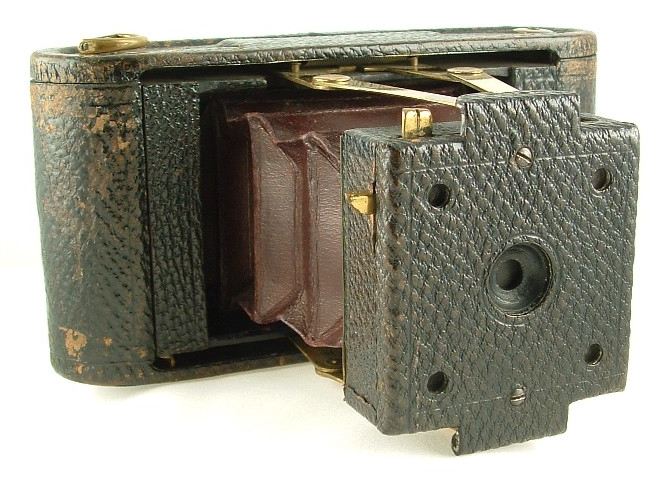
Description
This example of the Folding Pocket Kodak has the conical lens opening / 4 holes on lens panel / brass fittings / no locking case catch / sliding flat strip support. All of these match the conditions required for it to be an original model.
However the serial number appears to be slightly greater than that listed in Coe [4] as the end of the sequence for the original model (he claims a break at 5101, when the locking catch was introduced). This example clearly breaks that rule.
The camera came with a contemporary booklet, but labelled for the No 1A Folding Pocket Kodak (UK publication with the Clerkenwell address listed). This is interesting in itself as it seems to show this camera (4 holes in the front, not used for the later 1A model as far as I know), so perhaps it is an original booklet updated as an interim version for the 1A when it was initially introduced?
~ # ~ # ~
| Model / Variant: | Original Model |
| Date of this Example: | 1897 |
| Serial Number: | Serial #4478 stamped into aluminium base (inside) |
| Availability: |
|
| Inventory Number: | 426 |
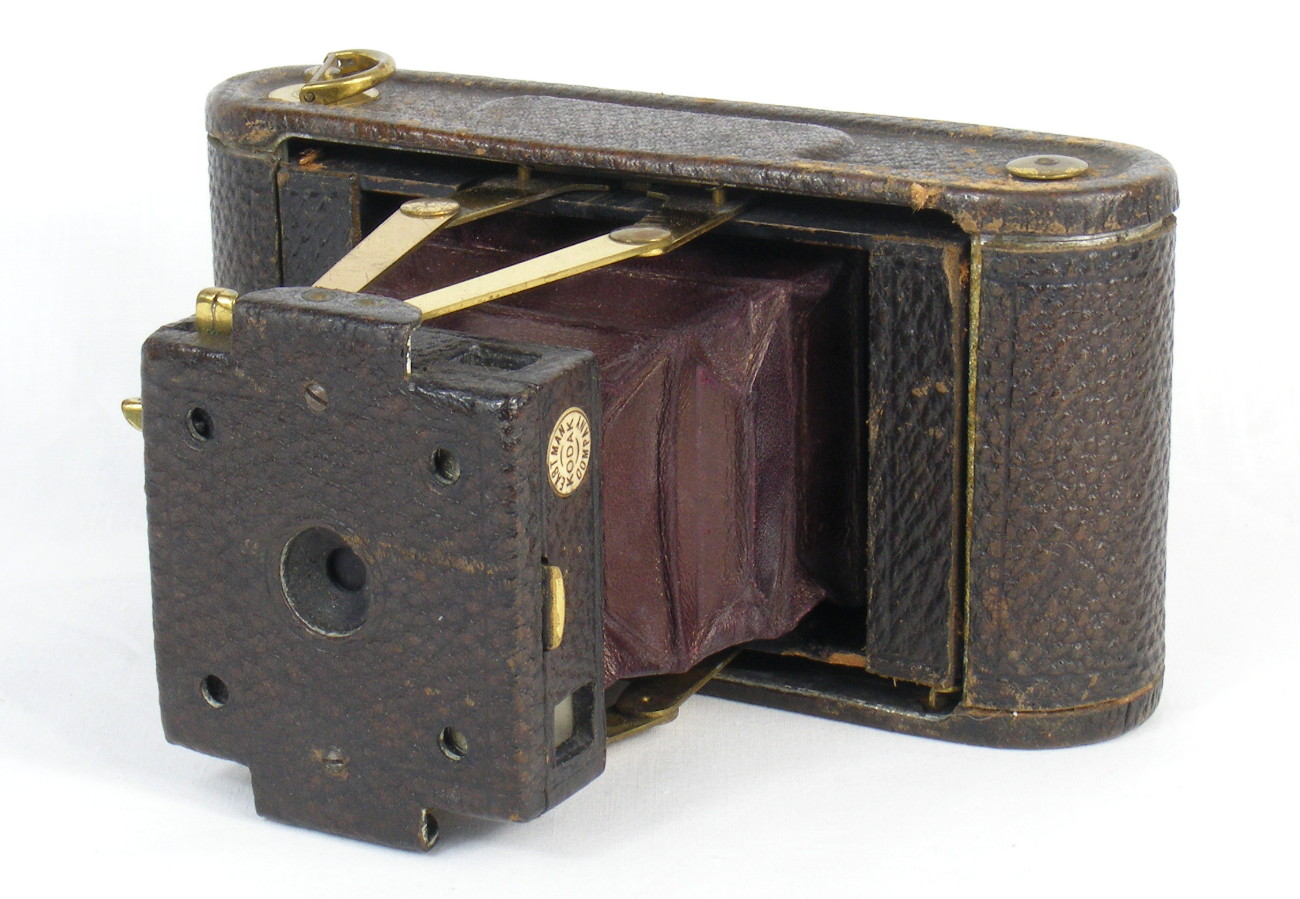
Description
As with the previous example of the original model above, this example of the Folding Pocket Kodak has the conical lens opening / 4 holes on lens panel / brass fittings / no locking case catch / sliding flat strip support. The serial number is within that listed in Coe as the end of the sequence for the original model (Coe identifies a break at 5101 - this example is serial 4478). Compare with item #261.
The camera came with a contemporary case, although the camera is a tight fit.
~ # ~ # ~
| Model / Variant: | Original Model |
| Date of this Example: | 1897 |
| Serial Number: | Serial #6787 stamped into aluminium base (inside) |
| Availability: |
|
| Inventory Number: | 661 |
|
Photos copyright © 2016 David Purcell. Do not use without permission. |
Description
Again, this example of the original Folding Pocket Kodak has the conical lens opening / 4 holes on lens panel / brass fittings / no locking case catch / sliding flat strip support. The serial number is well outside that listed in Coe as the end of the sequence for the original model (Coe identifies a break at 5101 - this example is serial 6787). Compare with items #261 and #426.
The camera came with a soft leather case, with an unusual brick pattern, although the camera is a tight fit.
Two letters came with the camera, where a previous owner had been trying to determine its potential value back in 1995. One is from Colin Harding at the National Museum of Film & Photography (signed); the other letter is from Andrew's Cameras in Teddington offering a valuation but declining to buy.
~ # ~ # ~
| Model / Variant: | Transitional Model |
| Date of this Example: | 1898 |
| Serial Number: | Serial #68009 (or maybe 60089 according to which way up you read it) stamped into aluminium base (inside). |
| Availability: |
|
| Inventory Number: | 540 |
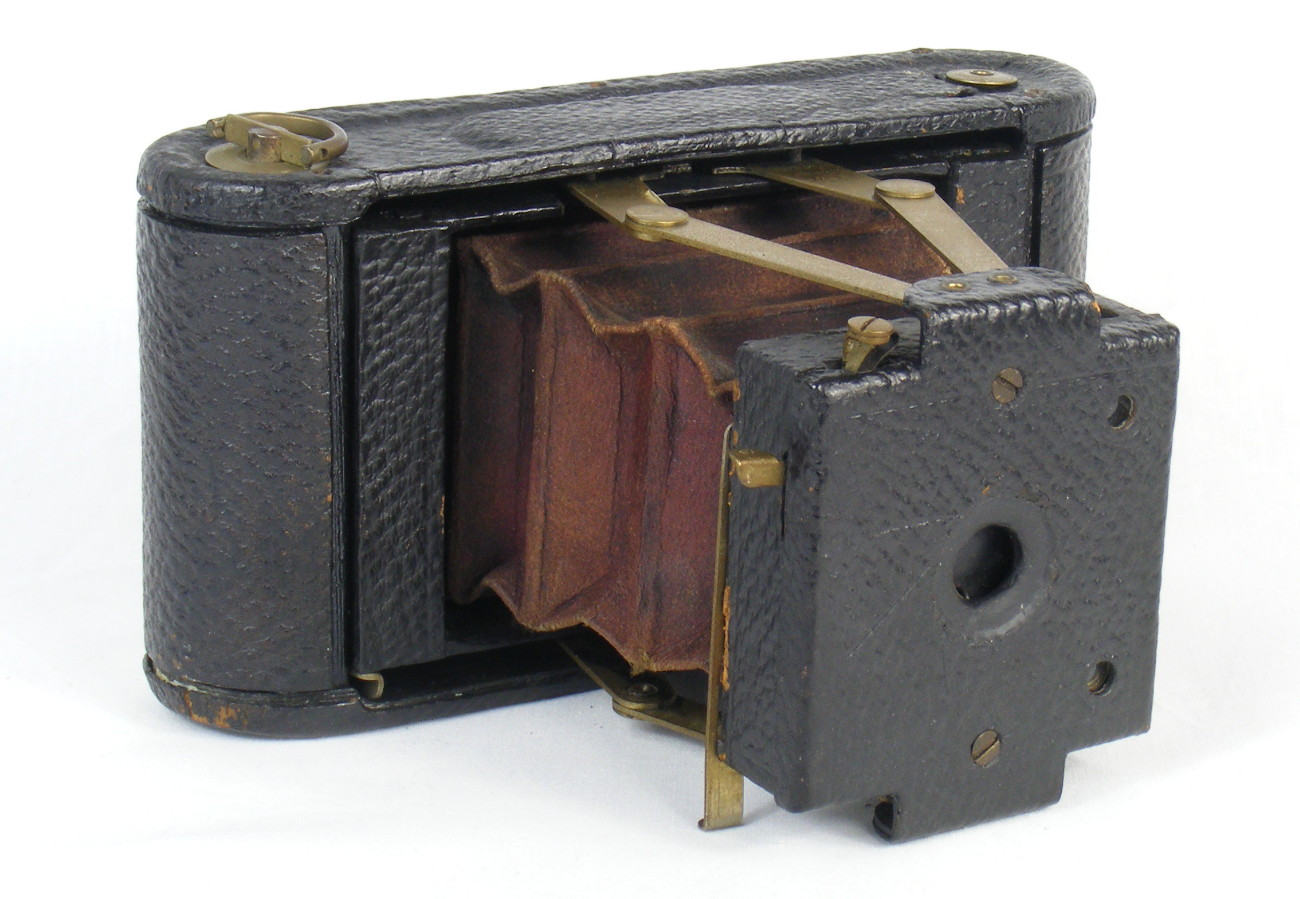
Description
This example of the Folding Pocket Kodak is a later model, introduced in March 1898 (according to Coe) with locking case catch. The leather has suffered some wear and tear and is lifting in places from the aluminium bodywork.
It has 2 holes on lens panel / brass fittings / locking case catch / sliding flat strip support. The serial number suggests this might be an early 1899 model (variant spans March 1898 to April 1899 according to Coe). Compare this example with #426 (original pattern).
The photo below shows the underside of this transitional model, clearly showing the release catch, which is absent from the original models such as #426.
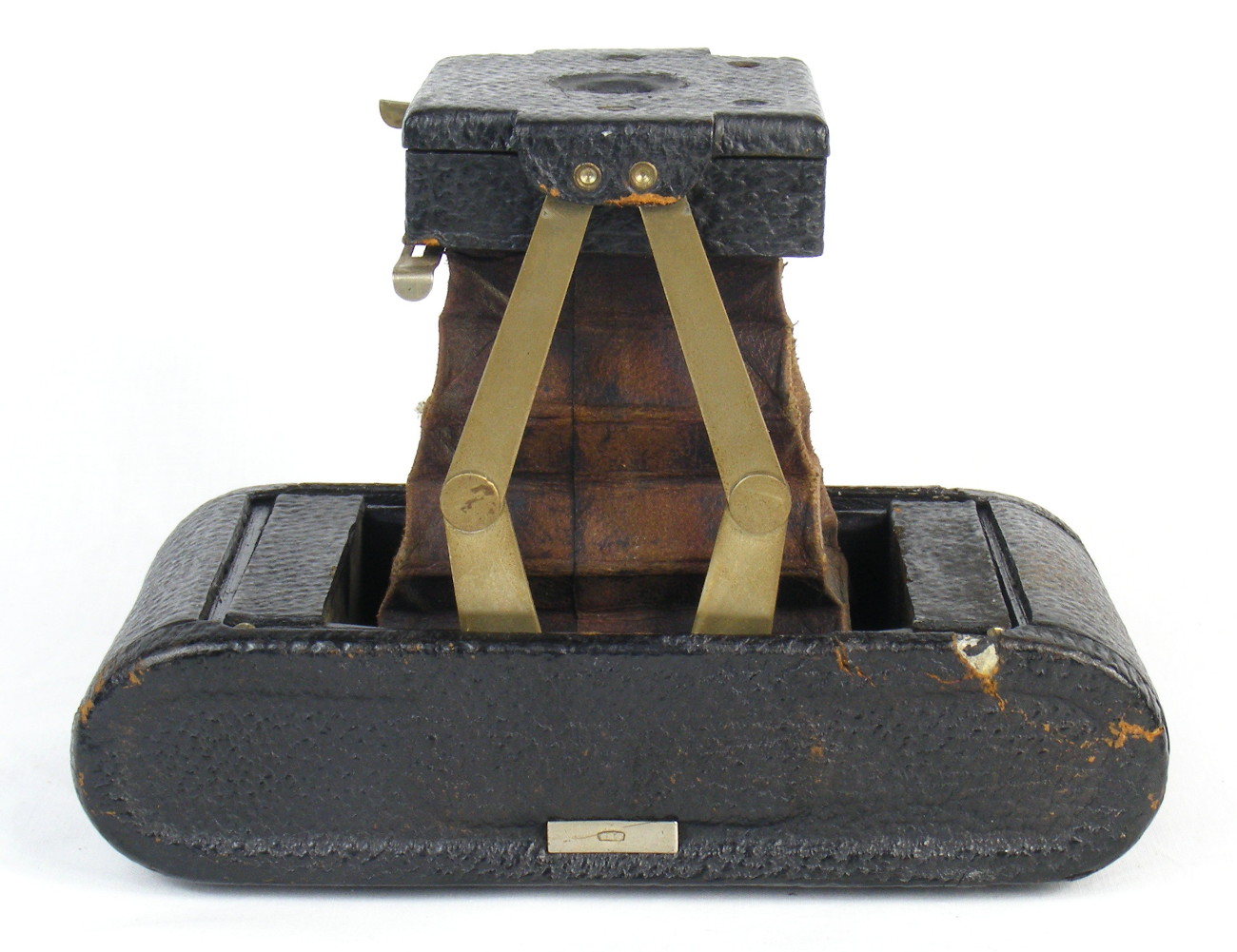
The maroon bellows are grubby with evident signs of a contemporary repair in one of the folds.
I have a contemporary copy of "Picture Taking with the Folding Pocket Kodak" bought separately. This is marked on the front cover as having been produced by "Eastman Photographic Material Co. Ltd." that is likely correct for this variant.
I also have a copy of the instruction booklet that is dated April 1898, which would also be correct for this camera, as the change to the nickel plated version happened in Mar 1898. However this second copy, also bought separately, is an Eastman Kodak (US) version.
Notes
All three examples of the original pattern shown here were bought in the UK. A batch of the original model FPKs were shipped to London for sale.
The two instruction booklets that cover the early model both mention the lock for the back, so neither relate to the earliest original model, although the photographs used in both clearly relate to the original. Interestingly the US and UK versions of the booklets are different in size, the UK copy being slightly shorter and noticeably wider. The UK copy of the instructions marked for the No1A Folding Pocket Kodak, again a UK booklet, is of the same wider format.
You may also come across versions of the early model of the Folding Pocket Kodak in Europe where the lens panel has been replaced with a locally manufactured unit using European lens and shutter combinations. Eaton Lothrop noted in A Century of Cameras [5] that many European countries imposed significant import duties on shutters and lenses to favour their local industries; in addition European photographers tended to want more sophisticated shutters and lenses. Consequently examples exist where the front panel has been factory replaced in Europe with an alternative unit. Lothrop states that known cases include units produced by E. Krauss (pictured in the book) and H. Roussel in France, and C. P. Goerz in Germany.
![[ ]](../../images/unchecked.png)
![[x]](../../images/checked.png)




